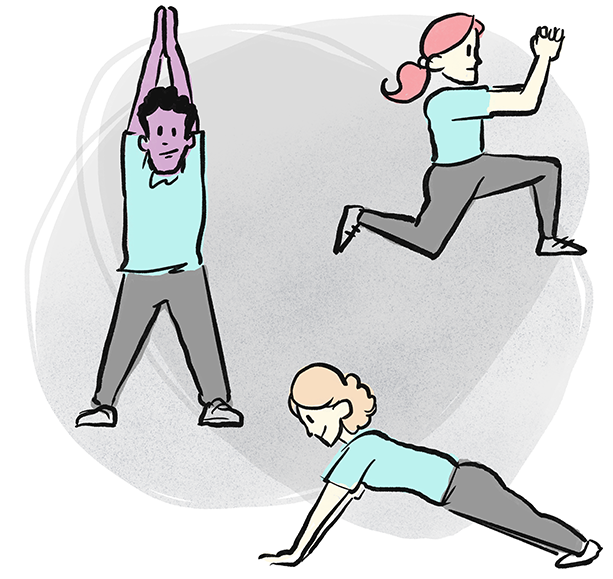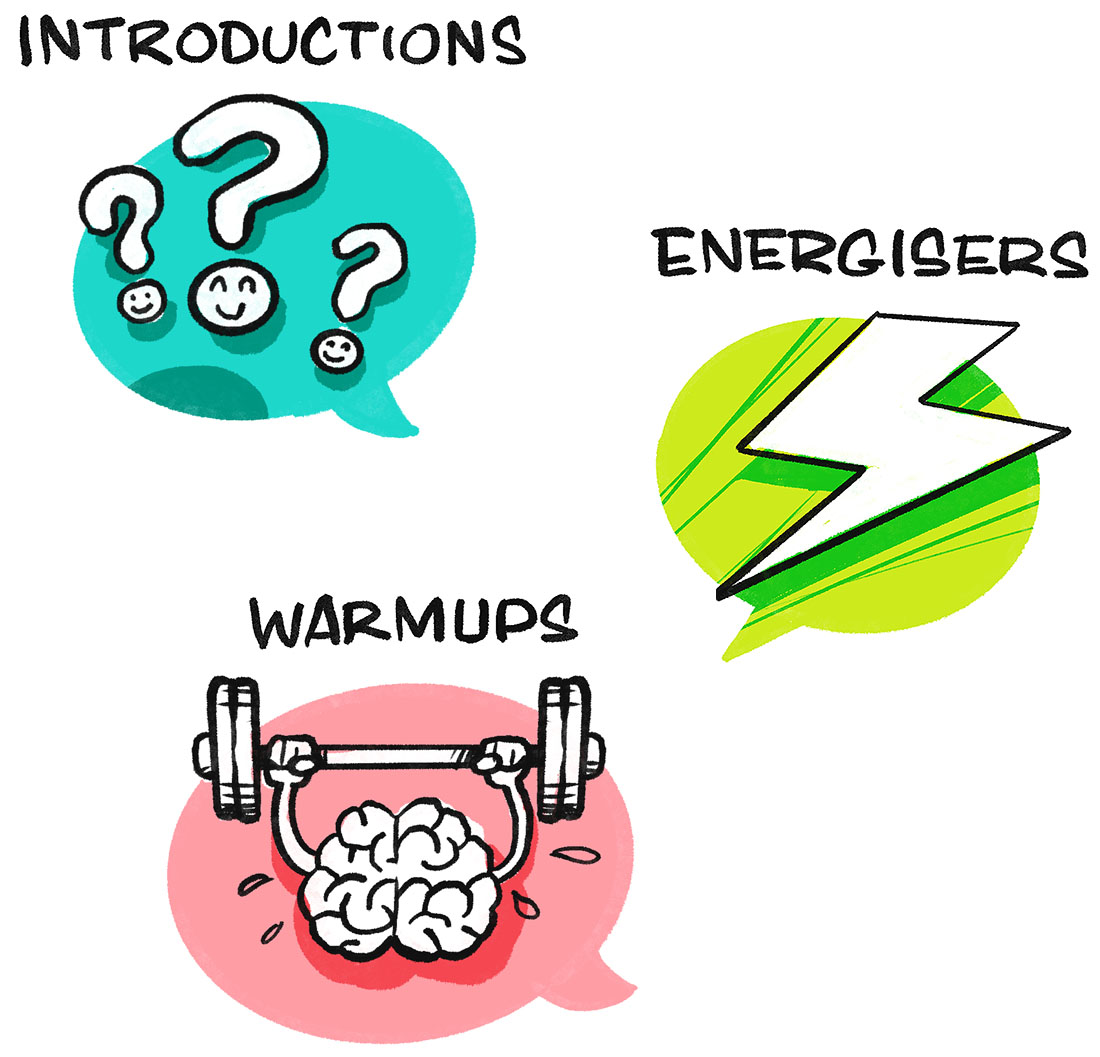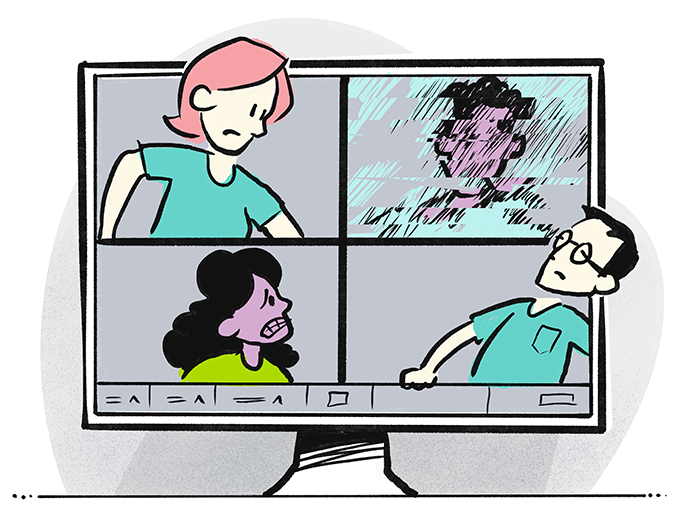How to facilitate icebreakers
The first rule of icebreakers: don’t call them icebreakers
The very mention of ‘icebreaker’ can strike fear and dread into the hearts of many people in your meeting. And with good reason! There are a lot of lame, cheesy icebreakers and team-bonding games around.
We don’t want to do any of those kinds of icebreakers. And we don’t want to put anyone off doing the good icebreakers, either. It’s still really important to get a group warmed up before they get to work, just like you’d warm up before any sporting activity. So instead of using the term icebreakers, just say something like:
- We’ll start by introducing ourselves to each other. Let’s make it a bit interesting, though: just say your name, your role, and something you’d really like to learn during this project.
- We’re going to have to get really creative for this workshop, so to limber up our creative brains, let’s do a round of Spam Can brainstorming.


Be clear on what sort of icebreaker to use and when
Just like you need to be clear on the overall intent of your meeting, you also need to be clear on what you want to achieve with the icebreaker. You can actually use them in different ways:
- Introductions - Great for getting to know one another better, at the beginning of a meeting. Also good when it’s a team that has some people who are newer than others.
- Energisers - Great for lifting the energy and mood in a group, especially if they’ve been hard at work for a long time, or it’s in the afternoon and people are drowsy from a big lunch, or just fatigued. It definitely pays to have a few energizers up your sleeve for whenever it feels like the vibe of your group is flagging.
- Warmups - Great for getting everyone’s brains ready for a new task ahead. Warmups are also a great way to shake up regular meetings that have become a bit stale and repetitive.
Prepare well, and optimise for putting people at ease
It’s a good idea to try the icebreaker by yourself or with one other person first, just to make sure it makes sense, before you try it on a whole group. Make sure you plan out the icebreaker in advance as part of your overall agenda, and get any materials or technology ready.
Even with all the right planning and preparation, glitches in the technology can happen, or some people may not have the right materials handy. Or sometimes some people might be unfamiliar with whatever technology you’re using. Always err on the side of putting people at ease. Be patient, and allow time for people to get acquainted with any unfamiliar software, and be ready to help them and encourage them.

Get the companion e-book, get full access
Buy the companion e-book: 50 Remote-Friendly Icebreakers, and get full access to all the icebreakers!
This includes browsing and filtering by remote-friendly, introvert-friendly and creative, plus handy slide template downloads.